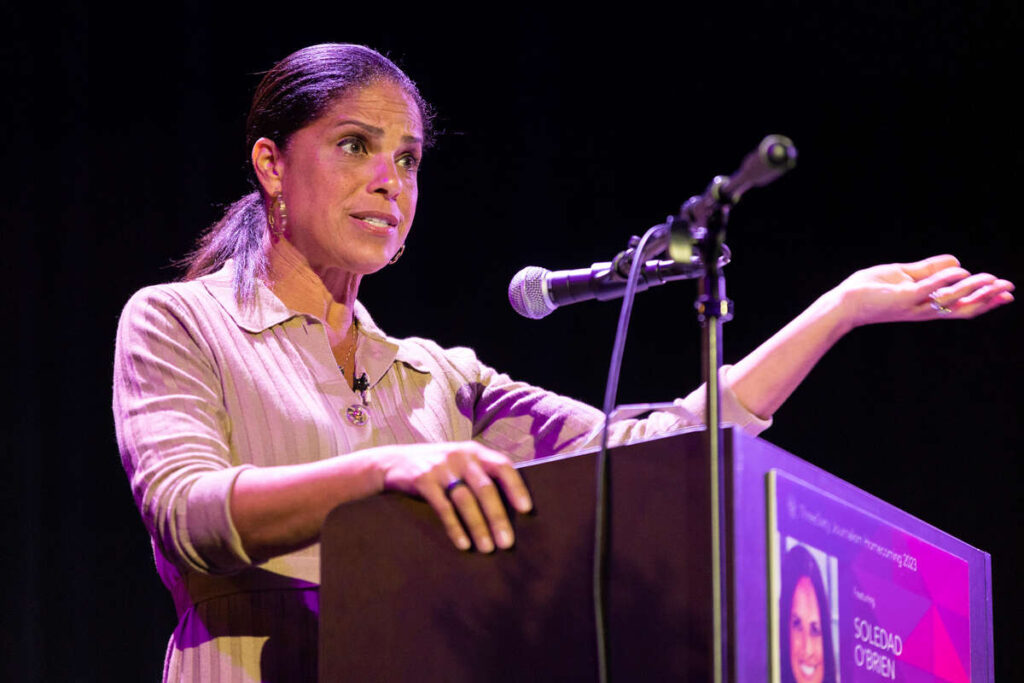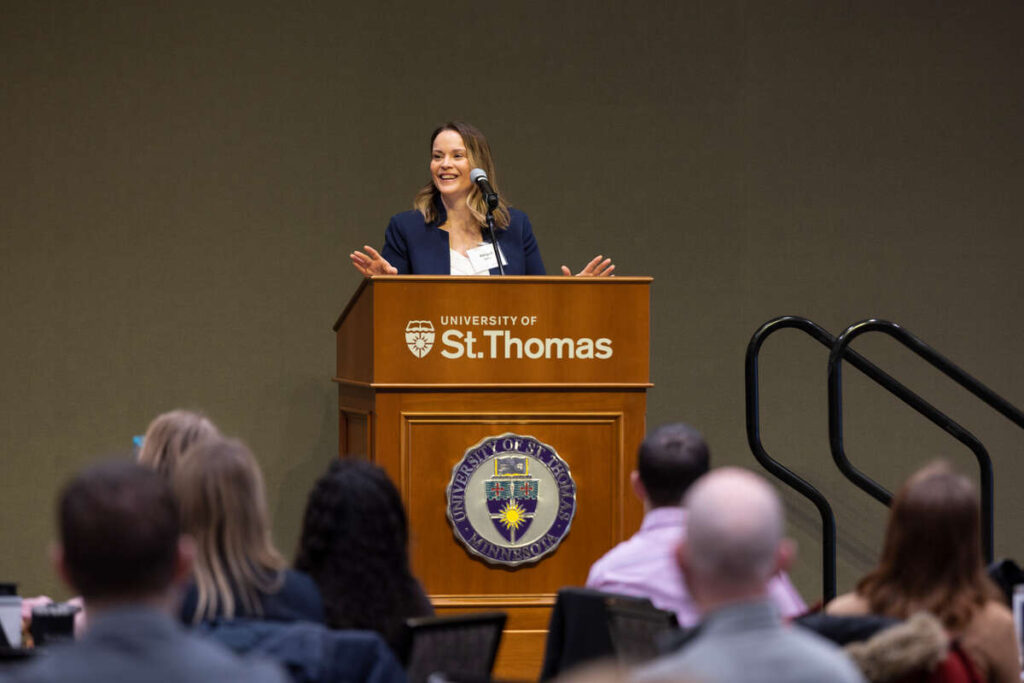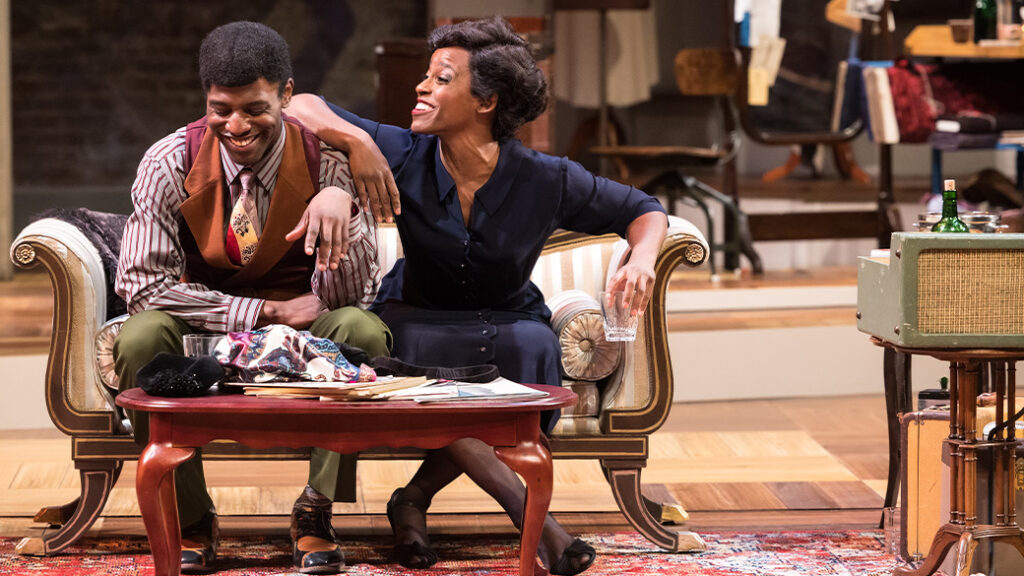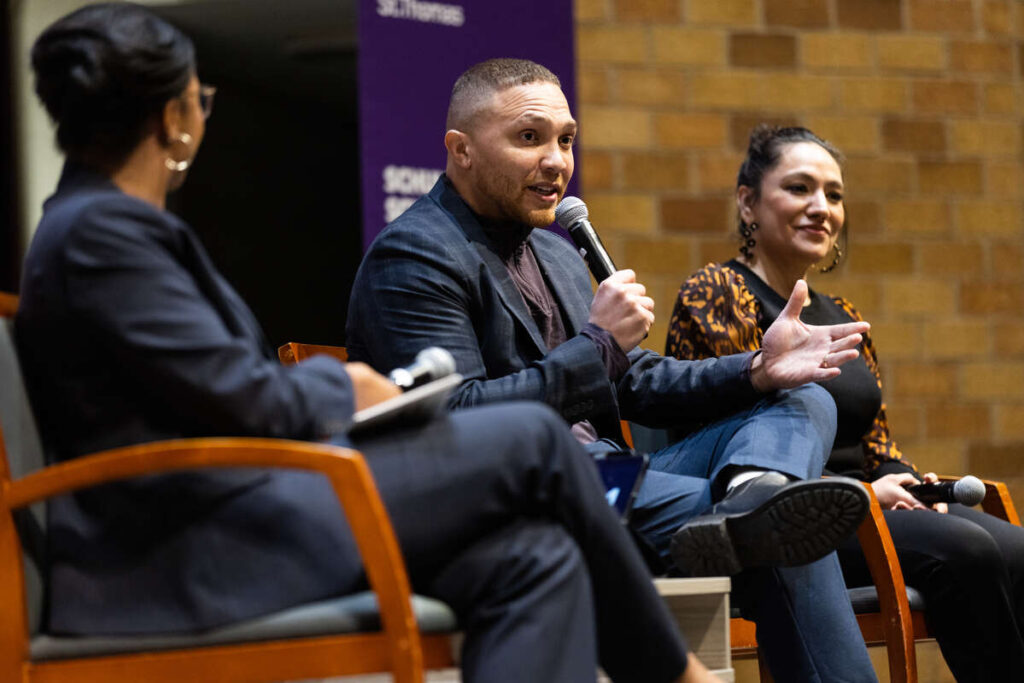The Jay Phillips Center for Interfaith Learning hosted a symposium Oct. 12 and 13 with scholars from around the country to discuss the “Challenges and Opportunities for Our Time” of interreligious experiences and dialogues. The symposium came on the 50th anniversary year of Nostra Aetate, a “declaration on the relation of the Church to non-Christian religions” proclaimed by Pope John Paul VI as part of Vatican II.
Here are five observations from the two-day symposium.
Nostra Aetate is alive and well 50 years after its publishing.
The spirit of Nostra Aetate – seen by many as a watershed document for the Catholic Church because of it being the first time the church explicitly addressed and recognized the value of other religions – is seen and felt around the world today, from theological discussions to everyday interactions. Keynote speaker Catherine Cornille lamented the lack of awareness around what the document itself has meant to people outside the field of comparative theology (speaker Bradley Malkovsky called it the church’s best-kept secret), but credited the spirit of Nostra Aetate as enabling “a sea change in Catholic attitudes toward other religions.”
Nostra Aetate reads in one section, “The Catholic Church rejects nothing that is true and holy in these religions. She regards with sincere reverence those ways of conduct and of life, those precepts and teachings which, though differing in many aspects from the ones she holds and sets forth, nonetheless often reflect a ray of that Truth which enlightens all men.” Islam, Hinduism, Buddhism and Judaism are all specifically addressed and recognized, and constituted the four areas of emphasis for the symposium.
The Jay Phillips Center assembled an all-star cast to discuss the tradition of Nostra Aetate and the interaction between Christianity and those four religions.
Symposium attendees – and the speakers themselves – raved about the group of people the Jay Phillips Center brought together to speak, with many top leaders in their fields giving their thoughts and exchanging ideas. Peter Feldmeier (University of Toledo) and Mark Unno (University of Oregon) spoke on the Christian-Buddhist encounter; Malkovsky (University of Notre Dame) and Anantanand Rambachan (St. Olaf College) spoke on the Christian-Hindu encounter; Sandra Keating (Providence College) and Homayra Ziad (Institute for Christian and Jewish Studies) spoke on the Christian-Muslim encounter; and Mary Boys (Union Theological Seminary) and Ruth Langer (Boston College) spoke on the Christian-Jewish encounter. Cornille, of Boston College, delivered the keynote address.
Despite the challenges of having to cover wide swaths of history, tradition, progress and obstacles in each of these encounters, the speakers all eloquently and passionately delivered remarks that were accessible for both high-level scholars and laypeople.
There have been, are and will be plenty of challenges to interreligious well-being.
Plenty of issues can hang up those seeking to further interactions between religions: dogmatic or doctrinal limitations (such as non-Christians being unable to participate in the Eucharist); detrimental historical actions (a history of suppression of Hindu practice by Christian missionaries, for example); mutual suspicion of opposing agendas; or irreconcilable differences (many view the monotheistic nature of Christianity at odds with Hinduism’s polytheism).
But…
There are many ways for people to have interreligious dialogue and interactions.
Cornille listed many different kinds of interreligious dialogue that people can and do have: A dialogue of mutual witnessing, where both parties witness their own beliefs to each other and stay true to their traditions; dialogue of social action, where people come together for a common social cause or effort and work together; dialogue of theological exchange, where – whether through comparative theology or theology of religions – people learn more about their own beliefs by way of learning about others; dialogue of religious experience, where people share their own religious traditions; and diplomatic dialogue, where religious leaders come together to symbolically or practically show their appreciation of each other.
Overall, there is reason to feel optimistic about the future of interreligious interaction.
Throughout all the discussions a sense of optimism prevailed about where things have gone since Nostra Aetate was published 50 years ago, where we are today and where we can go in the future. The people gathered at the symposium have dedicated many collective decades to understanding and appreciating what the world’s religions have to offer, and in their leadership we can find the examples of how things might continue moving forward.
The bottom line is this: At this point, there is a well-established tradition of recognizing and respecting what different religions have to offer. That’s not going to change any time soon.






